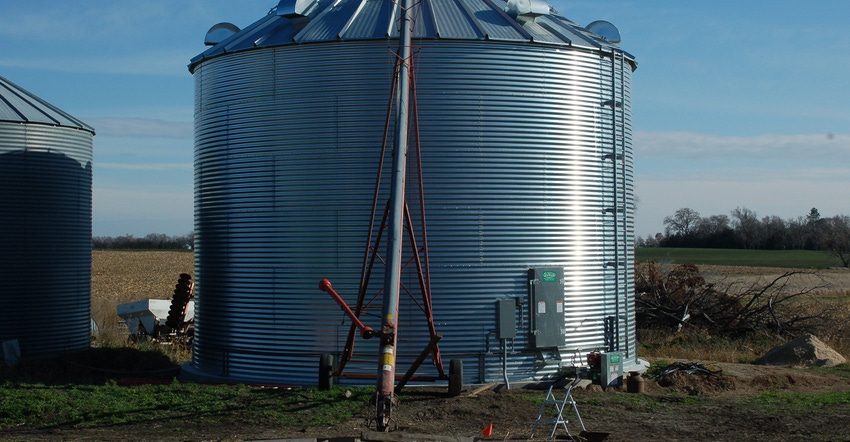October 8, 2019

By Robert Wright
With harvest approaching, it's time to prepare grain bins and harvesting equipment to help ensure that grain going into storage will remain in good condition. Don't wait until the middle of harvest to discover that a bin foundation is severely cracked, or later find that insects from grain left in the combine last fall have severely infested a bin of new grain. Proper bin and equipment preparation is a key to preserving stored grain quality.
The key to good grain storage is to put the highest-quality grain into the bin or bring it to the proper moisture condition as quickly as possible. Overall quality of stored grain always deteriorates — it's just a matter of how fast.
Having a good marketing plan and selling as much as possible before the grain heats up next spring is the best way to have quality stored grain. Grain is never as good as the day it is put into the bin. Storing the grain longer than next spring requires much more vigilance in management.
Harvesting equipment
Remove all traces of old grain from combines, truck beds, grain carts, augers and any other equipment used for harvesting, transporting and handling grain. Even small amounts of moldy or insect-infested grain left in equipment can contaminate a bin of new grain.
Adjust combines according to the manufacturer's specifications to minimize grain damage and to maximize removal of fines and other foreign material.
Proper cleaning and bin preparation will help ensure that grain going into storage will remain in good condition.
Bins and other system components
Check the bin site and remove any items or debris that would interfere with safe, unobstructed movement around the bin. Remove any spilled grain and mow the site to reduce the chances of insect or rodent infestation. If necessary, regrade the site so that water readily drains away from bin foundations.
Inspect bins and foundations for structural problems. Uneven settlement of foundations can cause gaps between the foundation and the bottom edge of the bin. This can result in grain spills and provide entry points for water, insects and rodents.
If perforated floors are used, a gap between the foundation and the bin will allow air that normally would be forced through the grain to escape from the bin. Small gaps usually can be filled with a high-quality caulking compound. If deterioration is extensive, the mastic seal may need to be replaced. Be sure all anchor bolts are tight and not damaged.
Inspect the bin roof and sides — inside and out — for leaks, loose or sheared bolts, rust or other corrosion, etc. Check the roof vents and access hatch and caulk any cracks at the roofline. Be sure the access ladder is complete and securely fastened to the bin. Repair or replace any deteriorated components.
Wiring for fans and other electrical components should be inspected for corrosion and cracked, frayed or broken insulation. Exposed wiring should be run through a waterproof, dust-tight conduit. Avoid kinking the conduit, and make sure all connections are secure.
Check fans, heaters, transitions and ducts for corrosion and damage. Remove any accumulated dust and dirt that will reduce operating efficiency. Be sure that all connections are tight.
Ensure bins are clean
Remove any old grain with brooms and vacuum cleaners. Never put new grain on top of old. Also, clean bins not being used for storage this year to keep insects from migrating to other bins.
Apply insecticides
If you think there is a chance you may hold grain in the bin into May or later, it's a good idea to apply residual insecticides to the empty bin after thoroughly cleaning it.
You also may apply certain insecticides onto the grain as it is being augered into the bin. A surface application often is recommended to prevent Indian meal moths from infesting the top surface of the grain.
If the bin has a raised drying floor and was known to be infested with grain storage insects last season, consider hiring a professional pest control operator to fumigate the empty bin before filling it with new grain.
Here's a list of Nebraska Department of Agriculture-registered grain bin treatment products:
For information, see Stored Grain Insect Pest Management, Purdue E-66-W, or the Grain Storage Management section in CropWatch.
Wright is a Nebraska Extension entomologist.
Source: UNL CropWatch, which is solely responsible for the information provided and is wholly owned by the source. Informa Business Media and all its subsidiaries are not responsible for any of the content contained in this information asset.
You May Also Like




